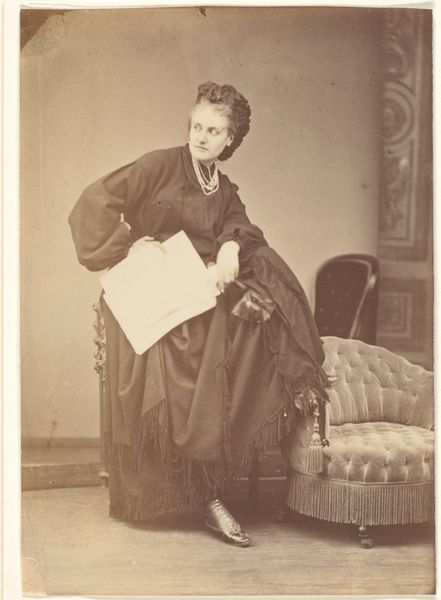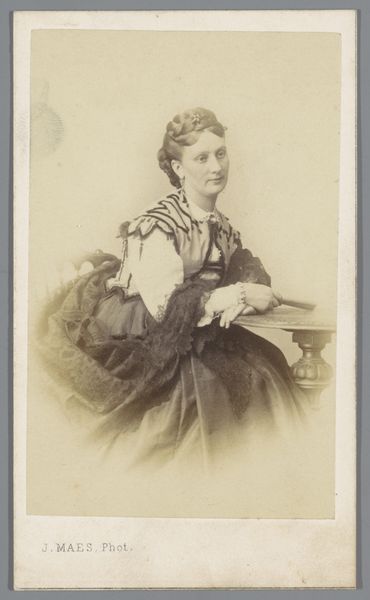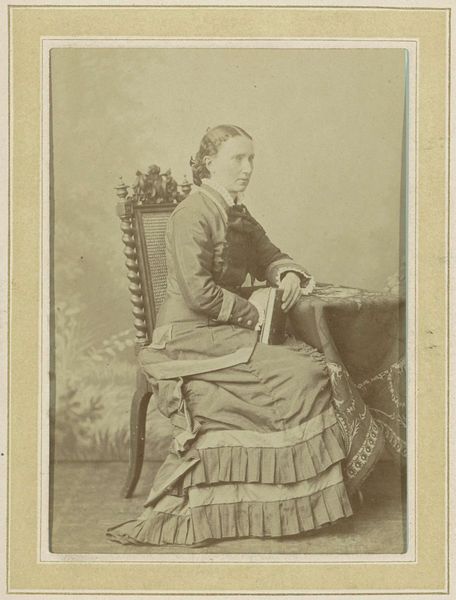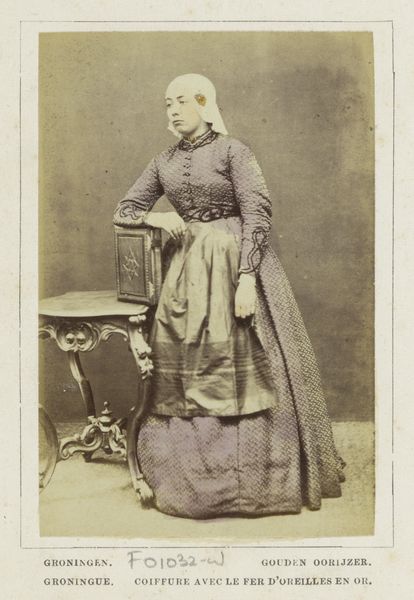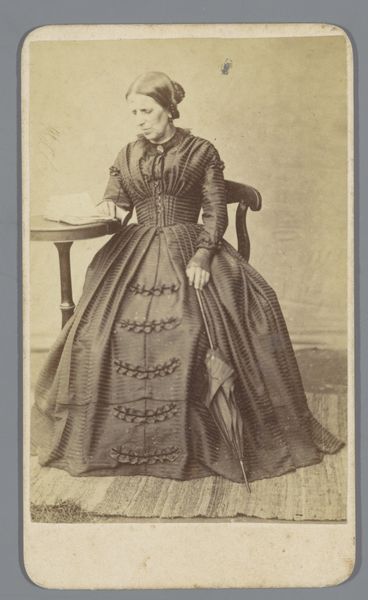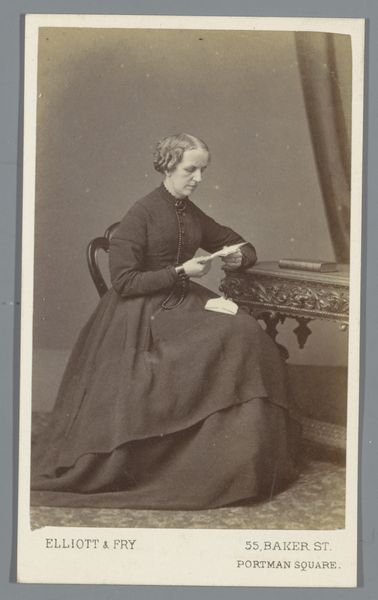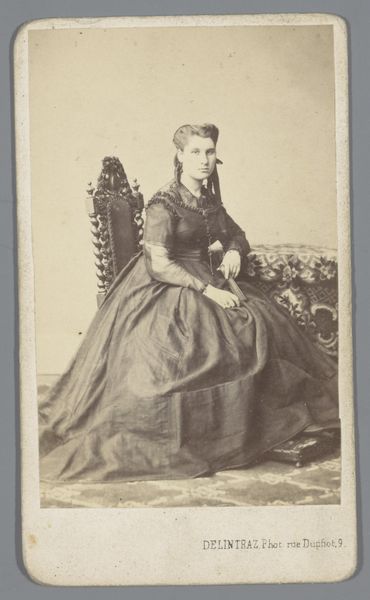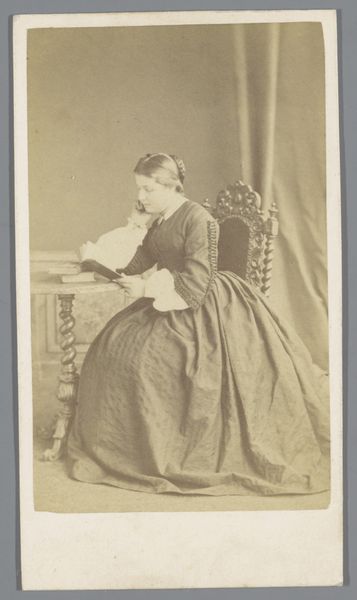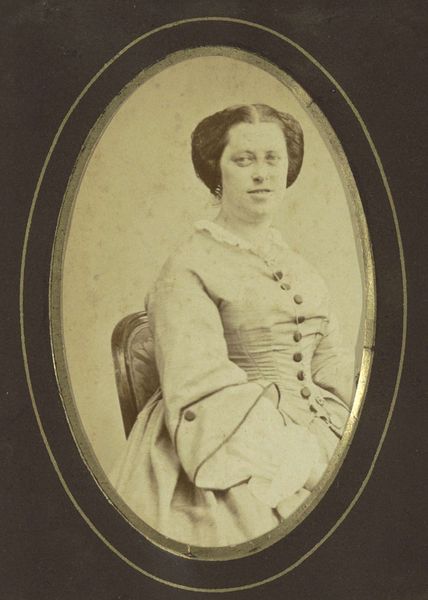
photography
#
portrait
#
photography
#
genre-painting
Dimensions: height 135 mm, width 94 mm, height 162 mm, width 105 mm
Copyright: Rijks Museum: Open Domain
Curator: This sepia photograph by Koene & Bütteringhausen, taken in 1899, is called "Portret van Eva Fockeline Boelen lezend in een stoel"… "Portrait of Eva Fockeline Boelen Reading in a Chair". Editor: What a perfect distillation of late 19th century bourgeois leisure! It's an image steeped in stillness, don't you think? Almost… stagnant. The dark clothing and the way she's absorbed in that letter—it's like a little window into a life meticulously contained. Curator: Yes, there’s definitely a sense of controlled atmosphere. I love how the textures play against each other—the lace of her dress against the smooth paper she holds, the sheen of the chair against the muted background. I’m struck by the almost theatrical arrangement of elements. The light, the set. The drama feels almost Vermeer-like, translated into a different medium. Editor: Exactly! The medium shifts everything. Photography offered, and continues to offer, this intriguing sense of “objective” reality that painting just doesn’t quite manage. The fact that this is photography turns the sitter, Eva Fockeline Boelen, into a tangible symbol of societal roles. The rigid conventions of dress, posture, and even what constitutes 'leisure' all speak volumes about gendered expectations. I wonder about the power dynamic at play when photography captures such an intimate moment and subjects it to a public gaze. Curator: That’s a really incisive point. It does raise the question of agency. Did she have a say in how she was presented? Or was she molded into this representation of idealized femininity? At the same time, though, doesn't the act of reading offer her a sense of interiority, a mental space away from the constricting roles placed upon her? Editor: Perhaps, but the mere *portrayal* of intellectual pursuit in a photograph doesn’t dismantle those roles. Is it actually rebellious or subtly reinforces an image of women's "acceptable" intellect, within narrow boundaries. Still, to her credit, her gaze suggests something more complex…a deeper story behind the social performance, or perhaps a genuine interest in what she is reading. I suspect Eva understood photography’s potency for immortalizing ideas about herself that she hoped might endure beyond her lifespan. Curator: An act of agency and a glimpse behind the surface, that's lovely. Seeing art as a form of potential legacy. Editor: Yes, that's it exactly! Curator: Thinking about it, I might search her family and reading habits! What was on her mind at the time? Now I am captivated. Editor: Precisely. And I, off to seek theories and ideologies and the intersection of that letter's content with her gaze!
Comments
No comments
Be the first to comment and join the conversation on the ultimate creative platform.
